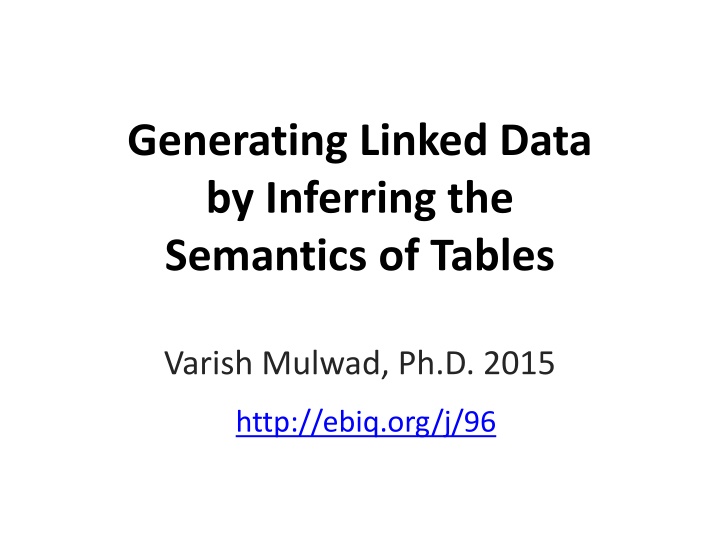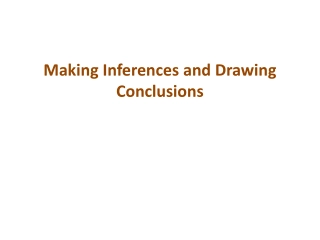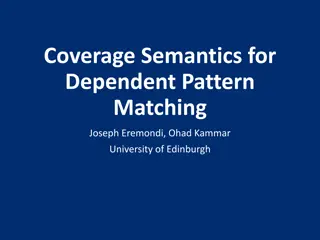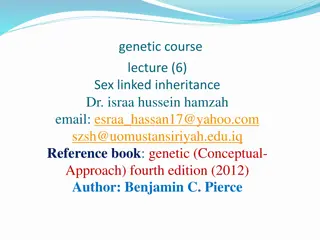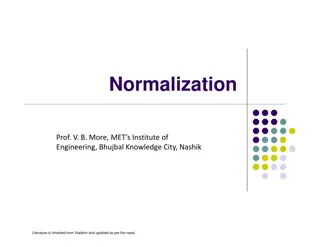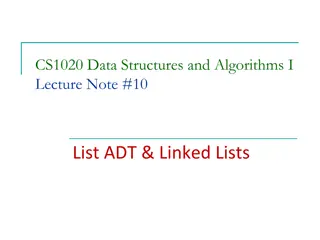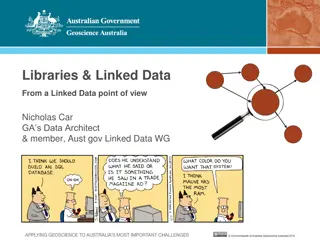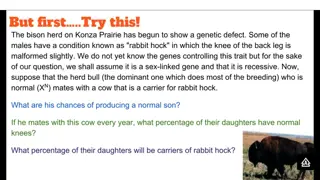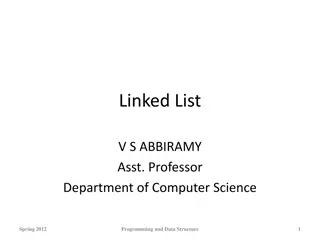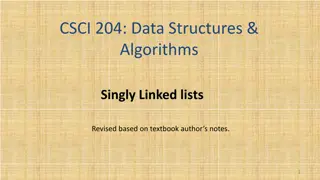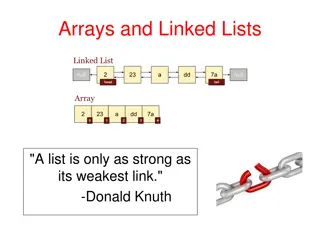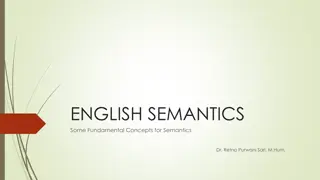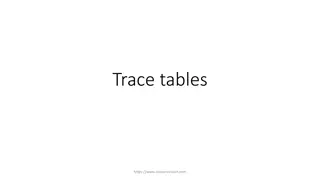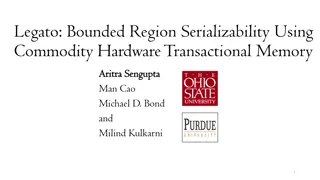Generating Linked Data by Inferring the Semantics of Tables
In this collection of images and text snippets, Varish Mulwad, Ph.D., delves into the process of generating linked data by inferring the semantics of tables. The content explores the conversion of tabular data into linked data, showcasing examples related to NBA teams and players. It highlights the transition from tables to Linked Open Data (LOD), emphasizing automated approaches and the importance of RDF in structuring information. Additionally, it touches upon the prevalence of tables in various domains, including evidence-based medicine, and the challenges in efficiently publishing meta-analyses. The visuals and excerpts provide insights into the significance of structured data for efficient information retrieval and knowledge representation.
Download Presentation

Please find below an Image/Link to download the presentation.
The content on the website is provided AS IS for your information and personal use only. It may not be sold, licensed, or shared on other websites without obtaining consent from the author.If you encounter any issues during the download, it is possible that the publisher has removed the file from their server.
You are allowed to download the files provided on this website for personal or commercial use, subject to the condition that they are used lawfully. All files are the property of their respective owners.
The content on the website is provided AS IS for your information and personal use only. It may not be sold, licensed, or shared on other websites without obtaining consent from the author.
E N D
Presentation Transcript
Generating Linked Data by Inferring the Semantics of Tables Varish Mulwad, Ph.D. 2015 http://ebiq.org/j/96
Goal: Table => LOD* dbprop:team http://dbpedia.org/class/yago/Natio nalBasketballAssociationTeams Name Team Position Height Michael Jordan Chicago Shooting guard 1.98 Allen Iverson Philadelphia Point guard 1.83 Yao Ming Houston Center 2.29 Tim Duncan San Antonio Power forward 2.11 http://dbpedia.org/resource/Allen_Iverson Player height in meters * DBpedia 2/49
Goal: Table => LOD* Name Team Position Height Michael Jordan Chicago Shooting guard 1.98 Allen Iverson Philadelphia Point guard 1.83 RDF Linked Data @prefix dbpedia: <http://dbpedia.org/resource/> . @prefix dbo: <http://dbpedia.org/ontology/> . @prefix yago: <http://dbpedia.org/class/yago/> . Yao Ming Houston Center 2.29 Tim Duncan San Antonio Power forward 2.11 "Name"@en is rdfs:label of dbo:BasketballPlayer . "Team"@en is rdfs:label of yago:NationalBasketballAssociationTeams . "Michael Jordan"@en is rdfs:label of dbpedia:Michael Jordan . dbpedia:Michael Jordan a dbo:BasketballPlayer . "Chicago Bulls"@en is rdfs:label of dbpedia:Chicago Bulls . dbpedia:Chicago Bulls a yago:NationalBasketballAssociationTeams . All this in a completely automated way 3/49 * DBpedia
Tables are everywhere !! yet The web 154 million high quality relational tables 4/49
Evidencebased medicine Evidence-based medicine judges the efficacy of treatments or tests by meta-analyses of clinical trials. Key information is often found in tables in articles # of Clinical trials published in 2008 # of meta analysis published in 2008 However, the rate at which meta-analyses are published remains very low hampers effective health care treatment 5/49 Figure: Evidence-Based Medicine - the Essential Role of Systematic Reviews, and the Need for Automated Text Mining Tools, IHI 2010
~ 400,000datasets ~ < 1 % in RDF 6/49
2010 Preliminary System T2LD Framework Predict Class for Columns Linking the table cells Identify and Discover relations Class prediction for column: 77% Entity Linking for table cells: 66% Examples of class label prediction results: Column Nationality Prediction MilitaryConflict Column Birth Place Prediction PopulatedPlace
Sources of Errors The sequential approach let errors perco- late from one phase to the next The system was biased toward predicting overly general classes over more appropriate specific ones Heuristics largely drive the system Although we consider multiple sources of evidence, we did not joint assignment 8/49
A Domain Independent Framework Pre-processing modules Acronym detection Sampling Query and generate initial mappings 1 2 Joint Inference/Assignment Store in a knowledge base & publish as LOD Generate Linked RDF Verify (optional) 9/49
Query Mechanism Team Michael Jordan Chicago Bulls Shooting Guard 1.98 {dbo:Place,dbo:City,yago:WomenA rtist,yago:LivingPeople,yago:Nation alBasketballAssociationTeams } Chicago Bulls, Chicago, Judy Chicago possible entities possible types 10/49
Ranking the candidates Class from an ontology String in column header String similarity metrics 11/49
Ranking the candidates String in table cell Entity from the knowledge base (KB) String similarity metrics Popularity metrics 12/49
Joint Inference over evidence in a table Probabilistic Graphical Models 13/49
A graphical model for tables Joint inference over evidence in a table Class C2 C3 C1 Team Chicago R21 R31 R11 Philadelphia Houston R12 R22 R32 San Antonio R13 R23 R33 Instance 14/49
Parameterized graphical model Captures interaction between row values ?? ?? ?? R33 R11 R12 R13 R21 R22 R23 R31 R32 ?? ?? ?? Row value Factor Node Function that captures the affinity between the column headers and row values C2 C1 C3 Variable Node: Column header Captures interaction between column headers ?? 15/49
Challenge: Interpreting Literals Many columns have literals, e.g., numbers Population Age Age in years? Percent? 690,000 75 Population? Profit in $K ? 345,000 65 510,020 50 120,000 25 Predict properties based on cell values Cyc had hand coded rules: humans don t live past 120 We extract value distributions from LOD resources Differ for subclasses: age of people vs. political leaders vs. athletes Represent as measurements: value + units Metric: possibility/probability of values given distribution 16/49
Other Challenges Using table captions and other text is associated documents to provide context Size of some data.gov tables (> 400K rows!) makes using full graphical model impractical Sample table and run model on the subset Achieving acceptable accuracy may require human input 100% accuracy unattainable automatically How best to let humans offer advice and/or correct interpretations? 17/49
